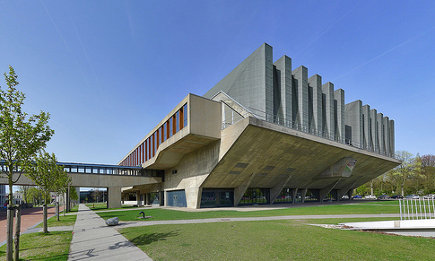Dutch quantum leap for quantum computers

A little over a month ago, science media all over the world were
ScienceGuide talked to doctoral candidate Vincent Mourik who waspart of the researcher group that made this major breakthrough.Mourik explains his fascination for the Majorana quest, whatchallenges his team faced along the way and what this discoverycould mean for quantum computers.
Pure curiosity
You and your team are investigating Majorana fermions. Whyis that?
It all starts with curiosity. Finding and understanding this yetunknown particle is really something new. It has characteristicswhich have never been observed before. That is why I dare to saythat its discovery might be truly revolutionary.
So what you are saying is that you were trying to discoverit simply because you can.
Fundamentally yes. You know for years nothing much happened inthis field of science. We were looking for the Majorana fermion andwhat drove us was scientific interest as an end to itself.
How did you start your search for this rareparticle?
I was studying technical natural sciences in Delft and throughmy final university project I got in touch with the research groupsurrounding Professor Leo Kouwenhoven. His team was part of theKavli Institute of Nanoscience, a very prestigious organization.That was around two years ago.
Back then, the whole idea of looking for the Majorana fermionwas just at its beginning. Leo and his postdoc were contemplatingways of tackling this quest. They concluded that they could do thisright here at Delft University. At that point in time, I was stilllooking for a topic I would focus on for my PhD thesis. I took thechance and joined their team which was quite a fortunate decisionas it appears now.
Synthesize or collide?
So how did you ultimately go about the search?
Basically what we did is that we created these particlesourselves by combining a number of ingredients. Of course there area lot of theoretically appealing ways of detecting these kind ofparticles. Our goal, however, was to go beyond these theoreticalconcepts and make our search concrete. The know-how for this wasright there in our team. We translated that into a practicalexperiment.
Science media all over the world are hailing what theydescribe as an “incredible” approach to realize a majorbreakthrough. What was unique about your work?
Well, if you consider that it took us only two years to detectsuch a fascinating particle, it is quite exceptional what weachieved. All we used was one tiny computer chip at little cost. Iguess that really distinguishes ourselves from others.
At CERN for instance experiments are conducted at a much greaterscale. The people working there do an amazing job. Their approachis different, however. They are trying to detect particles byletting them collide with one another. By contrast, we were actingmore like ‘engineers’ creating a system instead of only measuringresults of a collision.
Breakthrough for quantum computers
What do you believe will the impact be of yourdiscovery?
Our ultimate goal here at the Kavli Inistitute is still thecreation of a quantum computer. We want to build a computing systemthat works based on the smallest particles you could think of.Majorana fermions are of great interest in this context. What wediscovered can become a key component of future quantumcomputers.
Theoretically, research has shown that it is possible to buildnano-sized computers. But they are very vulnerable to interferencesfrom their environment. This would not be the case if you employquantum bits with Majorana fermions. We believe that these are muchmore robust.
This is really important. Since these fermions are much morestable you can use them to create hard disks for quantum computers.That is also why Microsoft is very interested in the research weare doing.
Because of these unique features, scientists all over the worldwere looking for the Majorana Fermion. The very elite of ourdiscipline was put to the task. That means we are talking about 50teams all over the world working on this, from Harvard to ETHZurich, from MIT to Chinese institutes. We hope that thiscompetition is over now. Everybody know that our quest to find theMajorana Fermion was successful. And it was our team in Delft thatmade it.
Nobel prize candidate
Two years you were working heavily on this project. Wasthere also a moment when you starting doubting the success of yourmission?
For the past two years we were extremely busy. But of coursethere was also a phase when we made no progress. We needed acertain new material to conduct our experiment. It was made of nanowires and our colleagues at Eindhoven University were particularlyskilled at working with it. We had to combine this material with asuperconductor. That turned out to be a very challenging task andfor three months we really got stuck.
Twenty, maybe thirty times we tried to combine those partswithout success. Every time we failed we had to see again what wentwrong. But then after a lot of attempts it finally worked…
There is a rumor among the Dutch technical universities thatthis discovery might be Nobel prize worthy.
Well, this depends. The real question is what we do with thisdiscovery. Majorana particles have a similar potential like
So we cannot just leave the discovery of the Majorana fermion asit is right now. Instead, we have to look for real worldapplications and see what else we can find out about itscharacteristics. What can we do with it, that’s the real question,isn’t it? If we manage to build on this, the basis for futurequantum computers may be laid out right now.
If you would like to have a look at the data underlying theexperiment, click
Meest Gelezen
Vrouwen houden universiteit draaiende, maar krijgen daarvoor geen waardering
Hbo-docent wil wel rolmodel zijn, maar niet eigen moreel kompas opdringen
‘Sluijsmans et al. slaan de plank volledig mis’
Wederom intimidatie van journalisten door universiteit, nu in Delft
‘Free riding brengt het hoger onderwijs in de problemen’

